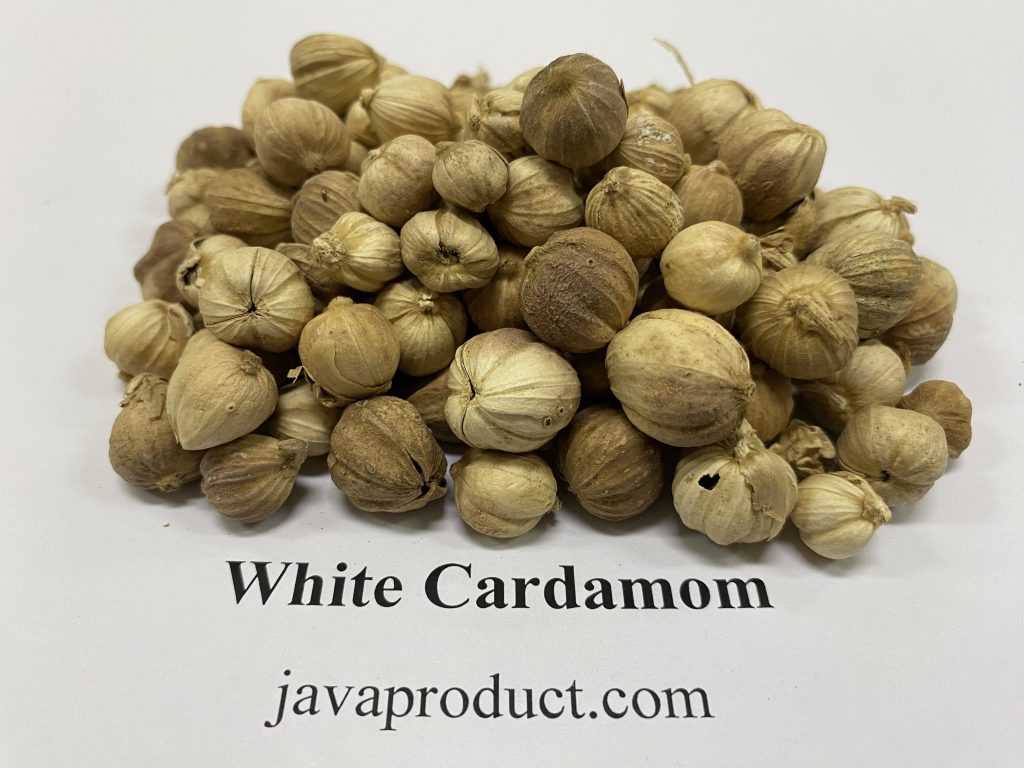White Cardamom, also known as bleached cardamom, is a processed version of green cardamom. It undergoes a bleaching treatment to reduce its natural green color, resulting in a pale white or yellowish hue. This process is often done for aesthetic or culinary purposes, particularly in dishes or industries that prefer a more neutral appearance.
Characteristics of White Cardamom:
- Color: Pale white to yellowish due to the bleaching process.
- Aroma: Milder than green cardamom but still retains a sweet and distinctive fragrance.
- Taste: Sweet and subtle with a slightly spicy undertone.
- Form: Oval or round pods with a tough outer shell protecting the seeds inside.
Uses of White Cardamom:
- Culinary:
- Commonly used as a spice in soups, stews, curries, biryanis, and Middle Eastern dishes.
- Adds aroma and flavor to baked goods, desserts, and confectioneries.
- Beverages: Enhances the flavor of teas, herbal drinks, and spiced milk.
- Medicinal: Used in traditional remedies to aid digestion, freshen breath, and soothe nausea.
Benefits of White Cardamom:
- Aids Digestion: Helps relieve bloating, gas, and indigestion.
- Rich in Antioxidants: Supports detoxification and combats oxidative stress.
- Antimicrobial Properties: Helps fight harmful bacteria.
- Aromatherapy: Its pleasant scent can have calming and mood-enhancing effects.
Additional Notes:
While white cardamom has similar properties to green cardamom, it is less common and primarily chosen for specific culinary or aesthetic purposes. Its milder flavor profile makes it suitable for delicate dishes or desserts.

